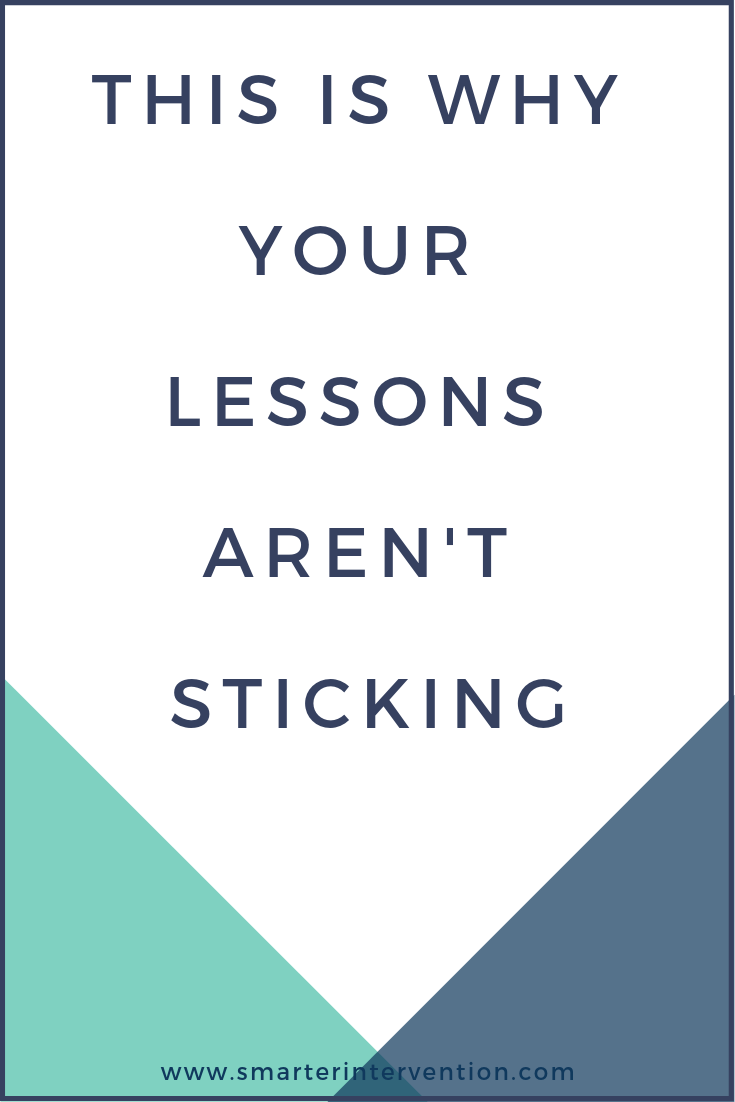This is Why Your Lessons Aren't Sticking
One of the most “eye-opening” moments for me in intervention, was when I had a middle-school student come in and ask, “What are the other kinds of letters besides vowels and consonants?” I didn’t understand. He asked again and when I explained that those were the only two kinds of letters, he was AMAZED. I had never thought to explain this to him before because I assumed he knew that there were no other types of letters.
…and that was the problem.
Everybody in this kid’s life had just assumed he picked up on that. This is an unfortunate reality for a lot of our kids.
We know that our struggling readers need to learn explicitly.
This means that we don’t leave anything up to assumptions. We don’t assume that if we teach them what vowels are, they will know that every other letter is a consonant. We don’t assume that if we expose them to the ‘-ck’ rule enough times, they will learn how to spell ‘ck’ words. We can’t assume this, because that’s not how their brains work.
Our students struggle to learn things implicitly. In other words, they don’t just “pick it up” over time. Unfortunately, as they progress through school, this means that a lot of rules can fall through the cracks.
A big component of working SMARTER is explicit teaching.
We have to explain the rules so our students have something to use as a guide. We need to explicitly show them how everything fits together, so they can see how one spelling rule fits into the bigger picture of encoding & decoding.
The best part? Explicit teaching helps everyone. Think about it - when you learned how to spell, did anyone ever tell you to use ‘dge’ at the end of a one-syllable word, after a short vowel, because no English word ends in ‘‘j’? What about if the letter ‘c’ is followed by an ‘e,’ ‘i,’ or ‘y’ it will say /s/ but any other letter will make it say /k/?
Now, most of you probably figured out how to read and spell words with these rules anyway. Implicit teaching works for some. However, how much easier would life have been had you learned all of the spelling rules?! I know that had I learned these rules as a kid, I wouldn’t have spent as much time second-guessing how to spell words like “circumference” and “cyclone” as a middle schooler.
Our tip for you - if you work with students, try to explain one rule to them the next time you see them. If you are talking about “oi” words, don’t just have them practice them. Teach them that “oi” says /oi/ in the middle of a word or syllable. If we hear that sound at the end, it is spelled using “oy.” This will transform their results and benefit them SO MUCH more than just reading and writing word lists over, and over, and over again.
It is possible to get lessons to stick and that makes a huge impact for our struggling readers. If you’re looking for resources to use with your students, then check out the 5CCL Activity Library. This library has hundreds of resources you can use to target instruction in all 5 core components of literacy + writing!
Click below to check out Mikayla and Ryan's demonstration of explicit teaching, and make sure you check out the rest of our blogs in our “Working SMARTER, Not Harder” Series.

